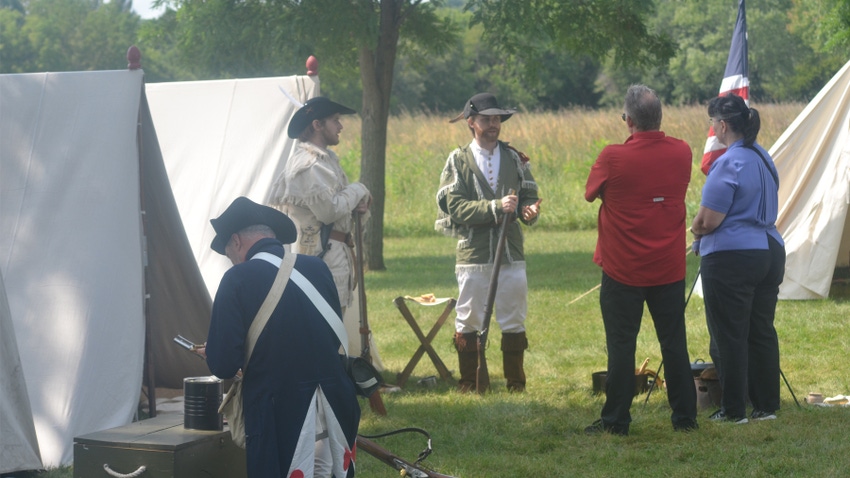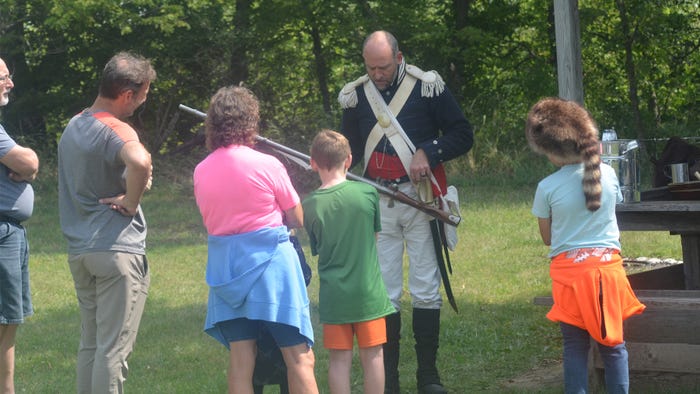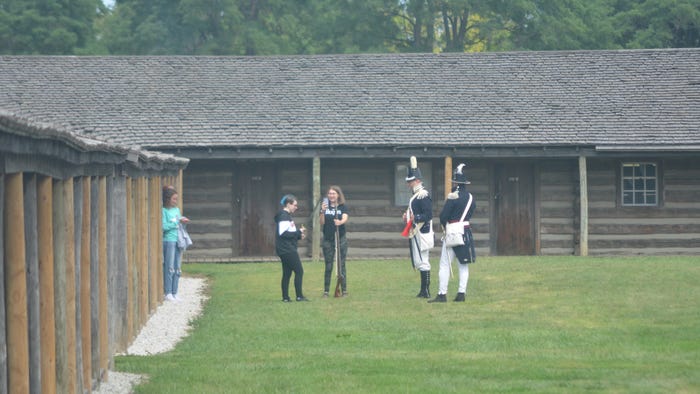
Originally dubbed Cantonment Missouri when it was established in 1819, Fort Atkinson was the first military post — and offered the first school, sawmill, hospital and library — in what is now Nebraska.
At its height, the fort was the largest military outpost in the country, housing nearly one quarter of the standing U.S. Army at the time — about 1,200 soldiers — many of them veterans of the War of 1812. It was established as the first military post west of the Missouri River, serving as a gateway to the West.
It was at this site before the fort, between June 30 and Aug. 3 in 1804, that the Lewis and Clark expedition held council with Oto and Missouri Indians, giving the location the name “Council Bluff.” When it came time to establish a fort in this vicinity, Capt. William Clark recommended the site.

FIREARMS: Visitors can talk with reenactors and learn about several important components to the fort, including firearms and ammunition.
In 1819, an ill-fated Yellowstone Expedition, led by Col. Henry Atkinson, attempted to ascend the Missouri River in three steamboats, but steam power in those days was no match for the Missouri.
Accompanying Atkinson and his crew was a scientific exploration party led by Maj. Stephen Long, whose party was able to reach a spot 5 miles below Council Bluff in a sternwheeler named Western Engineer. With winter coming on, the 1,120 men had to tough it out in the construction of this first western fort, and about 160 men died of scurvy and fevers.
To avoid spring flooding, they eventually moved the fort up above the river onto the bluff, constructing a square structure with sides about 200 yards long, including eight log houses, each consisting of 10 rooms.

LOG BARRACKS: The fort was built in a square design that included log houses as barracks and other utilities within the fort’s perimeter.
Fort Atkinson over the years witnessed important historical events, including assisting with an international treaty between Mexico and Pawnee. Hugh Glass, John Fitzpatrick and Jim Bridger were among the famous personalities to visit the fort. In 1827, orders came down to abandon the location because it was no longer deemed useful, and for the 6th Infantry Regiment to be stationed at Jefferson Barracks.
Thirty years after abandonment, the location was simply a cornfield with a few ruins visible. The Nebraska State Historical Society conducted a survey of the premises in the 1950s to distinguish the exact layout of the fort. Finally, in 1963, it became a state historical park under the Nebraska Game and Parks Commission.
Today, visitors can see the history made at Fort Atkinson through living history events and a completely rebuilt fort and outbuildings, and they can walk those parade grounds and see how the early soldiers in a far-flung location made the fort into a substantial and important outpost as America sought to move westward.

BIG BOOM: Along with many “real-life” demonstrations, reenactors demonstrate early explosives to visitors during living history weekends at the fort.
Learn more at fortatkinsononline.org.
About the Author(s)
You May Also Like






